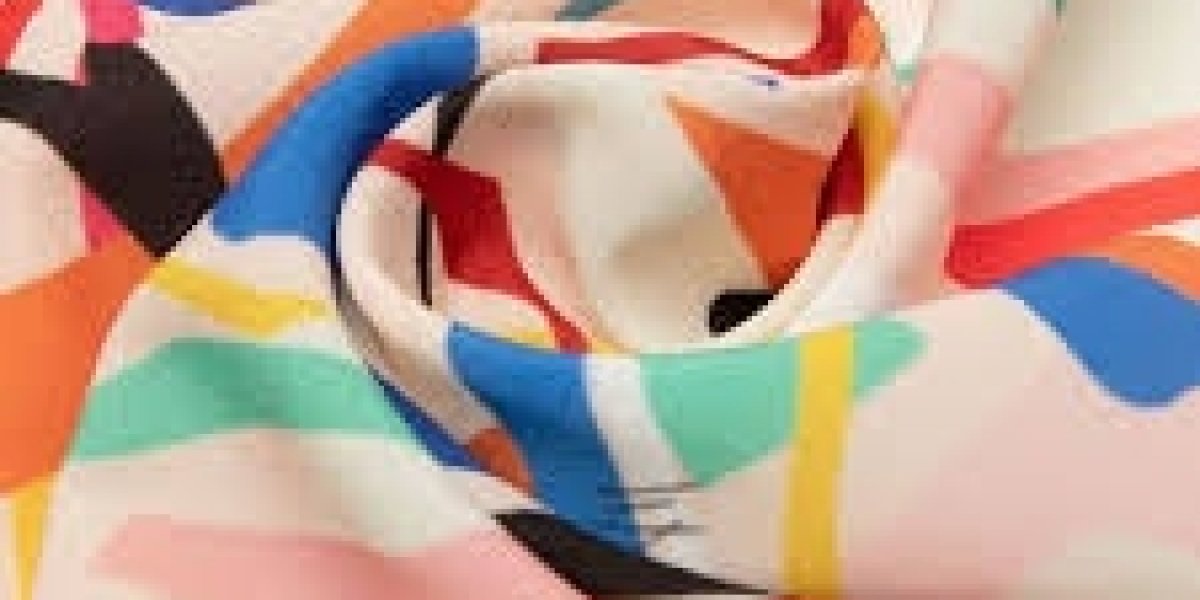In the modern textile and fashion industry, customization and creativity are more important than ever. Consumers today crave individuality — they want designs that reflect their personality, not mass-produced patterns. Enter custom digital textile printing, a revolutionary technology that is redefining how fabrics are designed, produced, and personalized.
This advanced printing method has replaced many traditional fabric printing processes by offering unmatched design freedom, sustainability, and efficiency. From intricate fashion prints to custom home décor, digital printing has become a cornerstone of innovation in the textile world. Let’s explore what makes this technology so impactful and how it’s shaping the future of fabric design.
What is Custom Digital Textile Printing?
Custom digital textile printing is a process that uses modern digital technology to print designs directly onto fabric using inkjet printers. Unlike traditional screen or rotary printing — which requires stencils, rollers, and separate setups for each color — digital printing allows you to print any design, color, or pattern instantly from a computer file.
The term “custom” means that each design can be unique. Whether you need one sample or a hundred, you can produce it without extra cost or setup time. This makes digital textile printing ideal for small businesses, fashion designers, and manufacturers who want flexibility and creativity in production.
The Digital Textile Printing Process
Digital textile printing is a precise and technical process that ensures high-quality and durable designs on fabric.
1. Designing the Artwork
Designs are created digitally using software such as Adobe Photoshop, Illustrator, or CorelDRAW. Artists can fine-tune every color, texture, and pattern before printing, allowing complete creative control.
2. Preparing the Fabric
Before printing, fabrics are treated with a special coating that helps the ink bond properly. This pre-treatment enhances color brightness, durability, and sharpness.
3. Printing
The fabric is loaded into a digital textile printer equipped with advanced print heads. These printers use micro-droplets of ink to reproduce complex patterns with incredible precision, even photo-realistic images.
4. Fixation and Washing
Once printed, the fabric is heat-set or steamed to fix the inks permanently. It is then washed and dried to remove any residues, leaving a smooth, durable, and vibrant finish.
Types of Inks Used in Digital Textile Printing
Different fabrics require different ink formulations. Choosing the right ink type ensures long-lasting, high-quality results.
Reactive Inks
Used for natural fibers like cotton and linen. They provide rich colors and excellent wash durability.
Acid Inks
Ideal for silk and wool. They offer deep shades and a luxurious finish.
Disperse and Sublimation Inks
Perfect for synthetic fabrics such as polyester. They produce vibrant prints that are permanent and resistant to fading.
Pigment Inks
The most versatile and eco-friendly option. Pigment inks work on multiple fabric types and require less water and energy.
Advantages of Custom Digital Textile Printing
Unlimited Design Possibilities
Digital printing allows you to print any design — from photographs to gradients — without color limitations. Complex and intricate patterns that are impossible with traditional printing become achievable.
Low Minimum Order Quantity
You can print a single piece or small batch economically. This flexibility makes it perfect for startups, sample creation, and personalized orders.
Fast Production
The digital process eliminates the need for screen preparation and setup, reducing lead times dramatically. Designers can move from concept to production within days.
Sustainability
Digital printing uses significantly less water, energy, and chemicals than traditional methods. Many printers use water-based, non-toxic inks, making it a greener alternative.
High-Resolution Output
Modern printers deliver ultra-sharp detail and smooth color transitions, ensuring premium-quality prints with excellent consistency.
Applications of Custom Digital Textile Printing
Fashion Industry
From couture garments to everyday wear, designers use digital printing to create limited-edition fabrics, experimental designs, and seasonal collections quickly and affordably.
Home Furnishings
Curtains, upholstery, table linens, and cushions are increasingly produced using digital printing, offering endless customization options for interior design.
Sportswear and Activewear
Sublimation printing provides bright, durable prints ideal for performance fabrics used in sports apparel.
Promotional and Advertising Textiles
Banners, flags, and exhibition fabrics benefit from vivid, durable, and lightweight digitally printed designs.
Custom Merchandise
Businesses can print personalized t-shirts, scarves, tote bags, and other fabric-based products on demand, catering to consumer trends in personalization.
Sustainability and Environmental Benefits
The textile industry is often criticized for its environmental footprint. Traditional dyeing and printing methods consume vast amounts of water and produce chemical waste. In contrast, digital textile printing offers a more sustainable alternative.
Water Conservation: Digital printing requires almost no water in the printing stage.
Reduced Waste: The process uses ink efficiently, minimizing leftover dyes.
Eco-Friendly Inks: Many manufacturers now use biodegradable, water-based inks.
Lower Energy Use: Fewer production steps and shorter drying times reduce energy consumption.
On-Demand Production: This reduces overproduction and textile waste.
By adopting digital technology, textile manufacturers can achieve both creative freedom and environmental responsibility.
Challenges of Digital Textile Printing
Despite its advantages, there are still a few challenges to consider:
Initial Investment: High-quality printers and inks can be costly.
Fabric Compatibility: Some materials require special pre-treatments or may not absorb ink evenly.
Production Speed: For massive bulk orders, traditional rotary printing can still be faster.
Color Matching: Maintaining perfect color consistency across different batches requires precision and expertise.
However, ongoing innovation continues to overcome these challenges, making digital textile printing more accessible and efficient each year.
The Future of Custom Digital Textile Printing
The future of this technology is incredibly promising. Advancements in AI-based color management, eco-friendly inks, and automated fabric handling systems are making the process faster, cleaner, and more cost-effective.
The growing trend toward on-demand production also means less waste and more creativity. As digital technology integrates with smart textiles and sustainable fibers, the scope of customization will expand even further.
In short, custom digital textile printing is not just a printing method — it’s an innovation that connects technology, art, and sustainability in one powerful process.
FAQs
What fabrics can be used for digital textile printing?
Almost all fabrics can be digitally printed, including cotton, silk, polyester, and blends. However, pre-treatment may be required for better ink absorption.
How durable are digital prints on fabric?
When printed with high-quality inks and properly fixed, digital prints are durable, colorfast, and resistant to fading even after multiple washes.
Is digital textile printing expensive?
For small and customized runs, digital printing is cost-effective because there are no setup costs. For very large runs, traditional methods may still be cheaper.
Is it eco-friendly?
Yes. Digital printing consumes less water and energy and uses non-toxic inks, making it a more sustainable option for the environment.
Can I print photographic images on fabric?
Absolutely. Digital printing can reproduce detailed, high-resolution images with vibrant colors and sharp details directly onto fabric.
Conclusion
Custom digital textile printing is transforming the global fabric and fashion industry with its unmatched blend of creativity, efficiency, and sustainability. It empowers designers to bring their visions to life instantly and allows manufacturers to produce small or large quantities without waste or excessive cost.
From personalized apparel to stunning home décor, this technology bridges the gap between design imagination and real-world production. As sustainability becomes more important and digital tools evolve, custom digital textile printing will continue to lead the next era of fabric innovation — offering endless possibilities for a more creative, efficient, and eco-conscious world.








